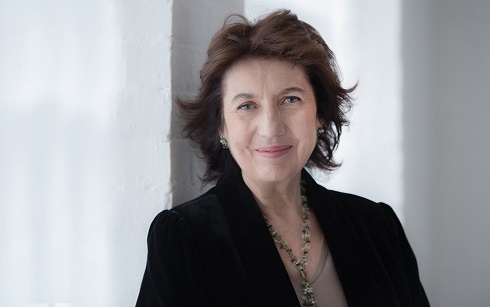 United States Haydn, Adès, Beethoven, Schubert: Imogen Cooper (piano), Perelman Theater, Kimmel Center, Philadelphia, 8.11.2018. (BJ)
United States Haydn, Adès, Beethoven, Schubert: Imogen Cooper (piano), Perelman Theater, Kimmel Center, Philadelphia, 8.11.2018. (BJ)

Haydn – Sonata in C major, Hob.XVI.50
Adès – Darknesse Visible
Beethoven – Sonata in A flat major, Op.110
Schubert – Sonata in C minor, D.958
As a distinguished conductor who happened to occupy the seat next to mine at a Carnegie Hall recital by Ivan Moravec some years ago justly observed during the intermission, one of the most salient features of the great Czech master’s playing was the attention it bestowed on the harmonic pulse of the music. A comparable quality made Imogen Cooper’s Philadelphia Chamber Music Society recital one of the most riveting and illuminating in my recent experience.
Ms. Cooper managed, without resorting to interpretative idiosyncrasy, to shine on the three classical works on her program – works I thought I knew well – a light that revealed aspects of them I had not previously been conscious of. Part of the reason for this was, again, intense concentration on harmonic pulse, enhanced by a truly rare and meticulous balancing of melodic lines with inner parts that too often go unheard. Coupled with the lambent tone she drew from the piano, rhythm blessedly flexible yet always lucid, and a quicksilver touch with embellishments, she made Haydn, Beethoven, and Schubert all sound like their familiar selves yet at the same time refreshingly new.
There was also an apposite blend of seriousness with – especially in the sparkling first movement of the Haydn sonata – beguiling wit. With regard to the latter quality, Ms. Cooper is clearly aware of the diminishing rewards that come with too much repetition: there was a mischievous humor in her sudden withdrawal of tone after a big sustained chord in this brilliant Allegro, but, having made the effect in both hearings of the exposition, she wisely refrained from doing it again in the recapitulation – thus, for an attentive listener, creating a quite different touch of humor.
Darknesse Visible is the British composer Thomas Adès’s response to a lute song by John Dowland, his forerunner by more than four centuries. This 1992 composition is deeply thoughtful yet enlivened at various points by rhetorical single notes that Ms. Cooper projected with striking force and accuracy. She then segued directly into Beethoven’s A-flat-major Sonata, and the juxtaposition of works whose origins span the 17th, 19th, and 20th centuries offered fresh insight into both their affinities and their equally revealing dissimilarities.
The Beethoven was given a reading that combined life-giving rhythm with the textural complexity that distinguished Cooper’s playing throughout the evening. Her performance of Schubert’s dramatic C-minor Sonata was a marvelous blend of moment-to-moment polychromatic intensity with thrusting forward motion. Here again, as with her Adés-Beethoven linkage, the pianist segued directly from minuet into finale with fierce impetus. She responded to the ovation that greeted her unyielding projection of this implacably dark-hued finale with an encore, Schubert’s C-minor Allegretto, that completed the program’s circle of works by great composers in their fullest maturity, further elucidated by the early Adés’s searching reaction to late Dowland.
Bernard Jacobson